It’s now or never. Or at least, now or who knows when.
Or if I’d followed that Chinese proverb, I should have done it 20 years ago, but since I didn’t, then I should do it now.
I am, obviously, talking about planting new and native fruit trees. A home orchard, specifically.
The point is, I finally finished planting all the fruit trees that I hoped to plant 15 years ago when I moved into this house. I didn’t get it done then, but I at least I made it the second best time – now.
Planting A Home Orchard with New and Native Fruit Trees
The first half of the orchard went in about six years ago and included two native persimmon trees (Diospyros virginiana) (that took years to grow from whips to something smaller than your average 1-gallon perennial – but now, about 12 years later, they finally seem to be taking off. Persimmon are among the few native to North American Fruit Trees that you can grow.
Also, a peach tree that actually has eight peaches on it this year (yes, I counted) and two cherries that are so pathetic that I need to remove them (or maybe just move, if I am feeling hopeful). There is a Cortland Apple tree that is epic and amazing and just wow, and another apple that is good – but needs some help.
But now, I also have a pear tree and two new cherries (one sweet and one tart) that hopefully will be much happier than the first two.
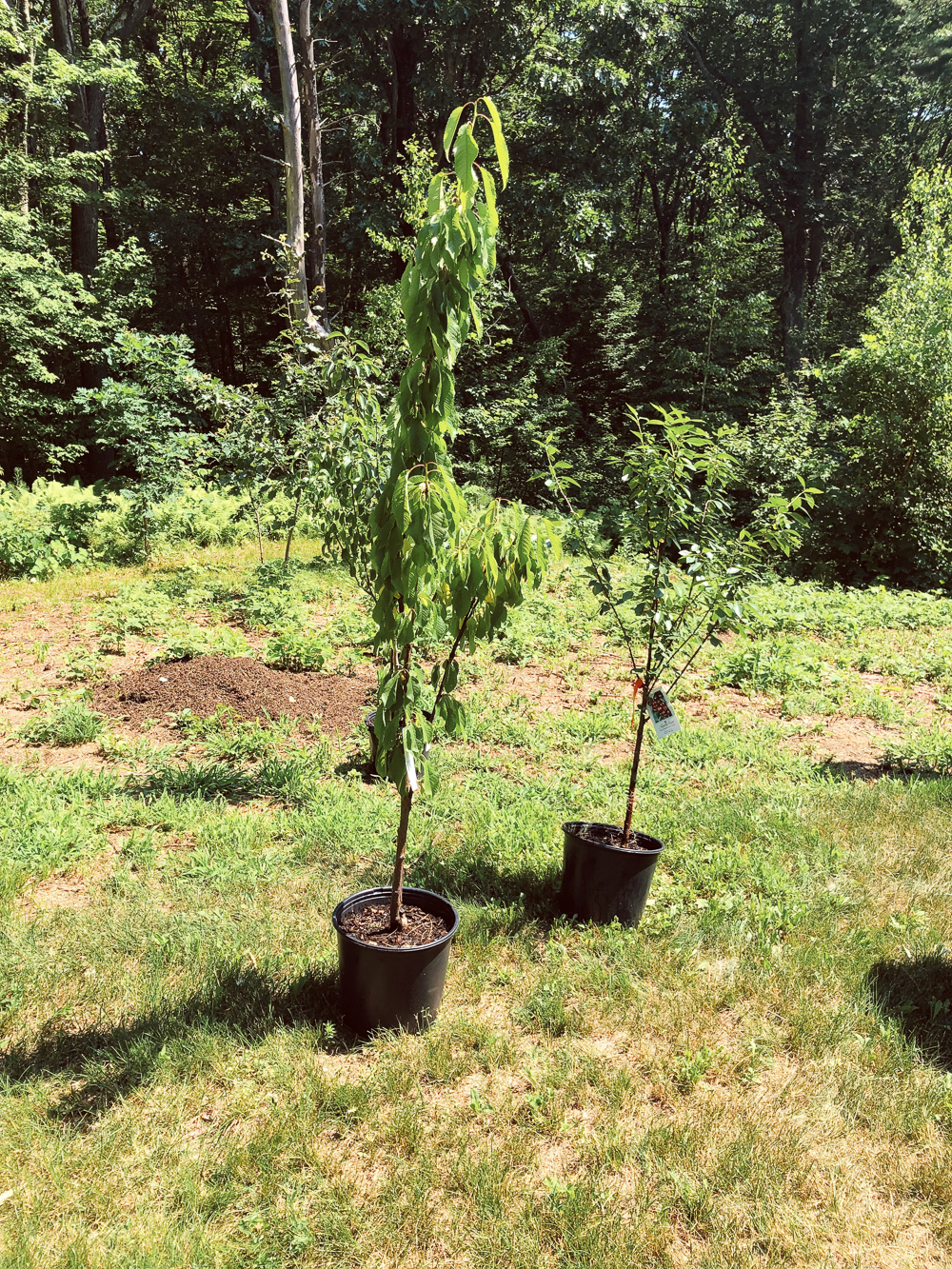
Since I have finally put a check mark next to the ‘Plant Orchard’ task I thought I’d share some of my successes and failures as well as a few tips I learned along the way.
First – Tree planting is tree planting. I shared a post last year about this and no matter if it is fruit trees or any other kind of tree, the method is the same.
Watering in the New Trees
I did, however, upgrade my watering this year, which has been handy since I installed not one but three trees. Before I even started putting the dirt back in around the root ball, I used the Gilmour Thumb Control Watering Nozzle to fill the holes with a lot of water. (BTW, the nozzle is from last year, and it is still working perfectly without leaks, which is more than I can say for some other watering nozzles that I just bought this season.)
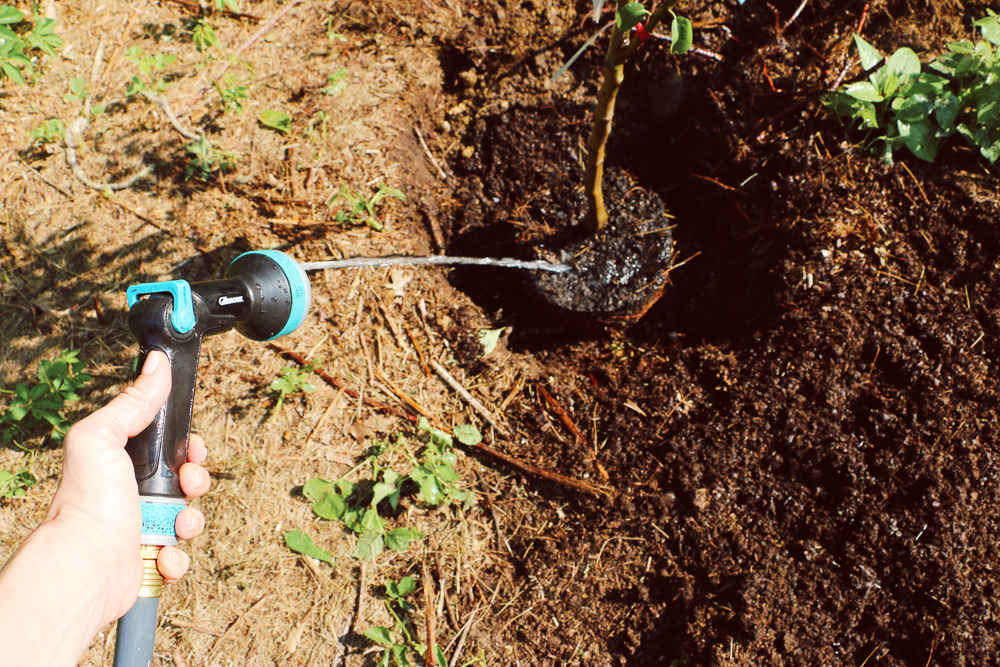
This area of my garden is really sun baked, so I want to make sure that there is plenty of moisture for the roots. Also, three trees means three times as much watering which can get to be a lot. I’ve been watering with a Gilmour Bubbler rather than by hand and it saves lots of time.
The bubbler is great for tree planting because the head slows down the rush of water so you can lay it where you need and not have to worry about washing away dirt or mulch with the pressure of the water coming out the nozzle.
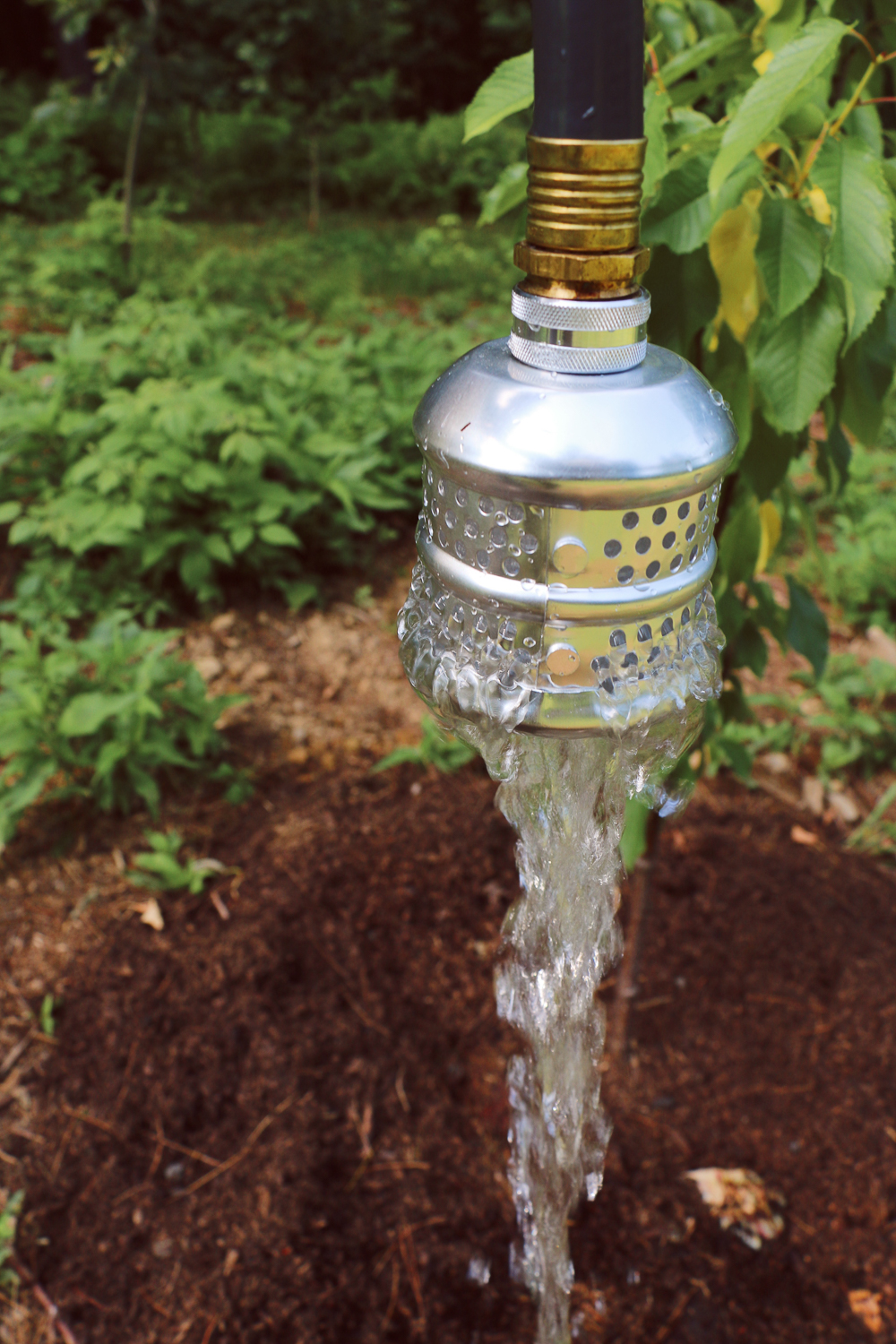
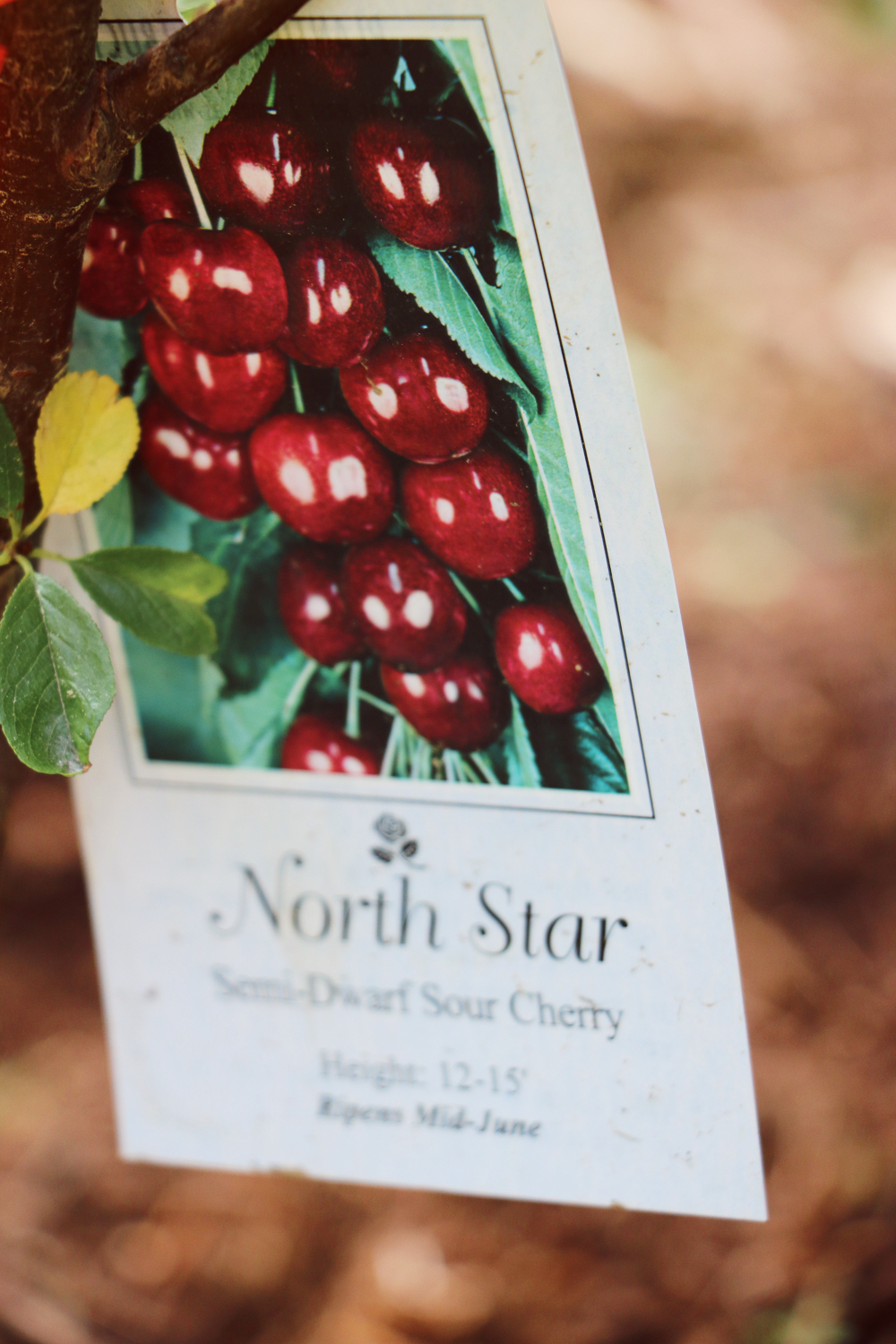
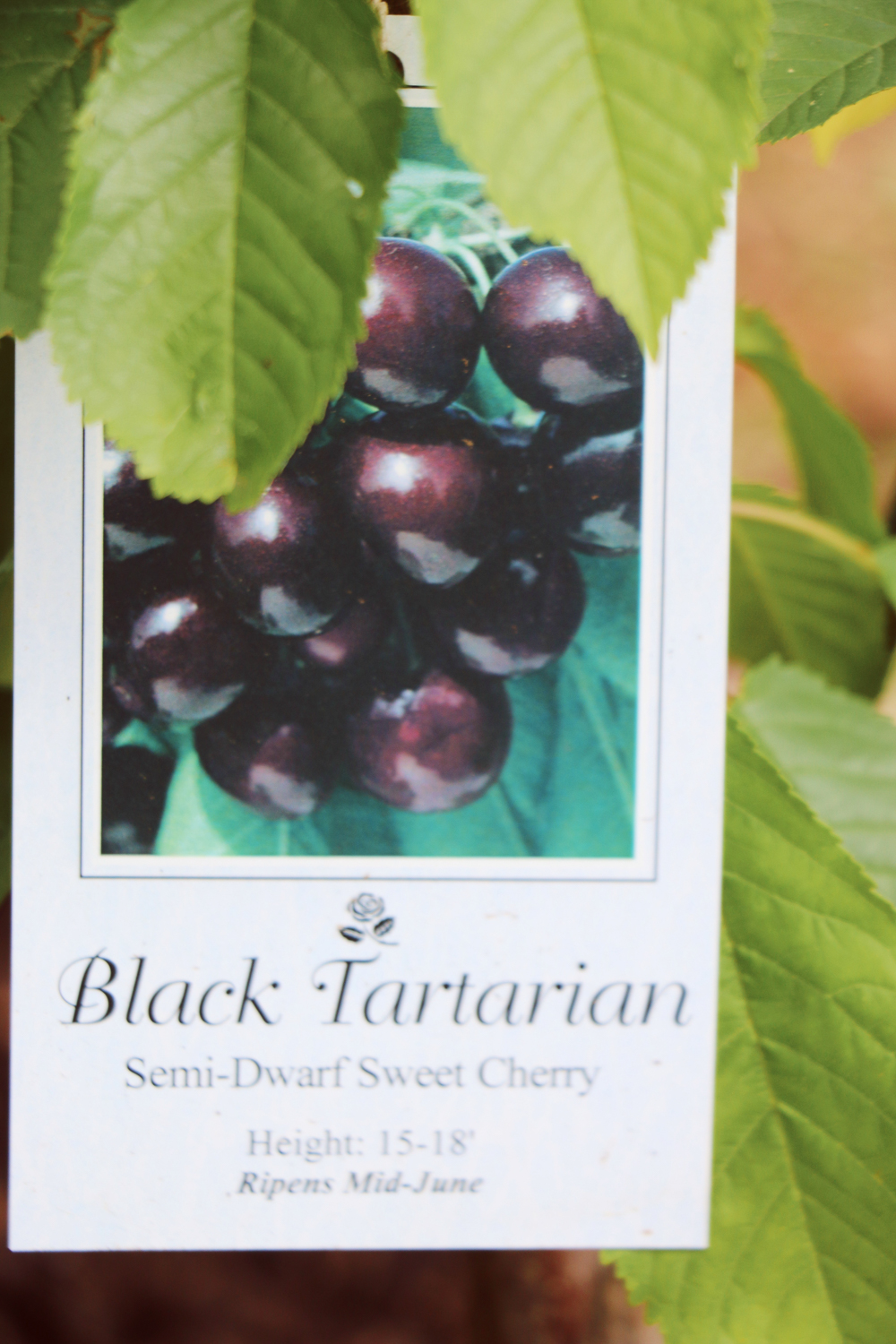
I already used a splitter to connect two Gilmour Flexogen Hoses and two bubblers, but I think I am going to get a three way splitter so that I can add a third and water all three baby trees at once. My setup is really easy to lay out since the hoses are kink-resistant.
New trees need a lot of water. Especially if you plant them in a super sunny area where the ground bakes (*I hope this sunnier location will be better than the shadier one where the current cherry trees are languishing).
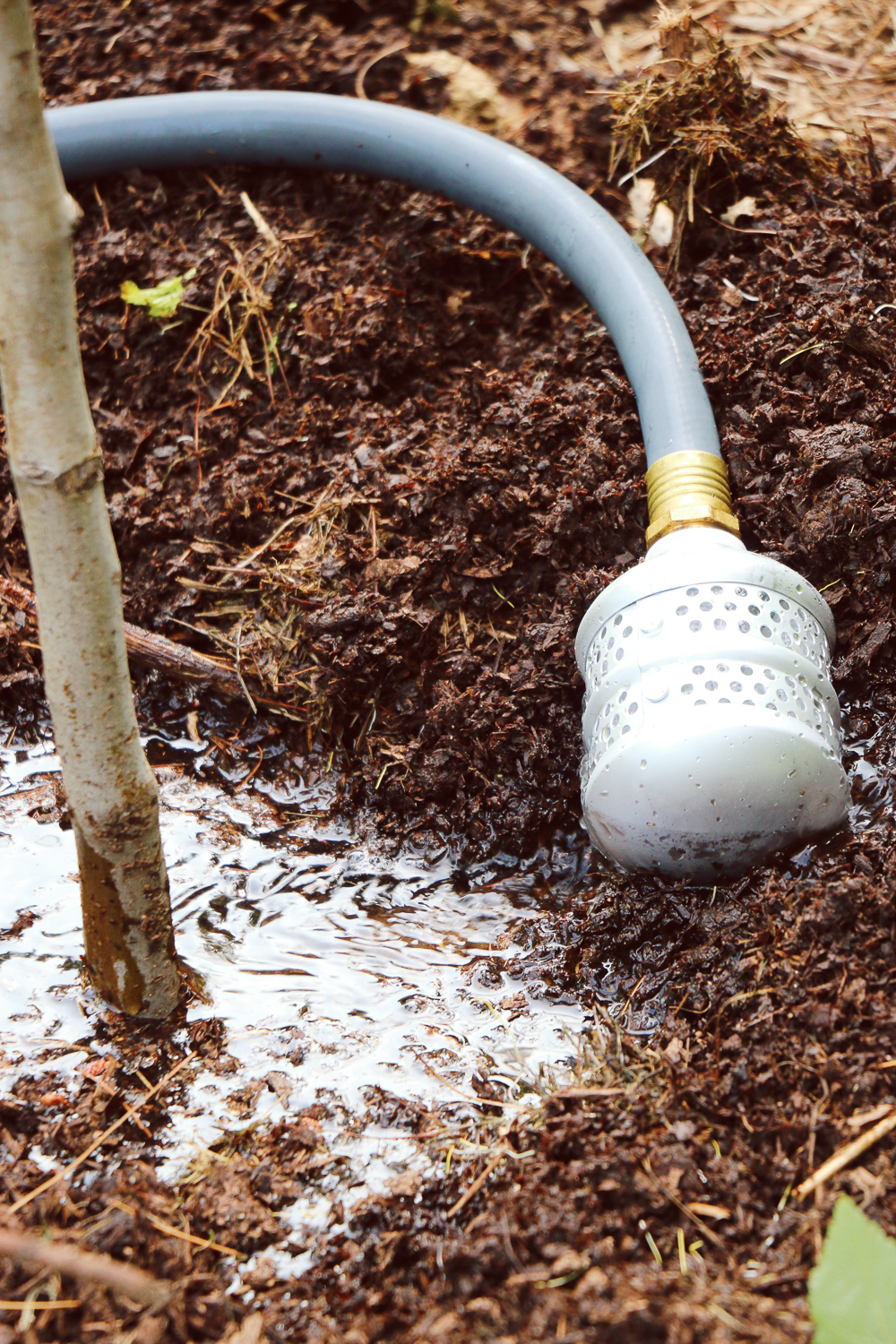
Planning and Planting Your Orchard
I’ve learned a few other interesting tidbits as I have been planning and planting my orchard that I thought were worth sharing.
Did you know that if you are limited on space, you can actually plant multiple fruit trees in one hole. It is called High-density planting and Nurseryman and author of Backyard Orchard Culture, Dave Wilson explains how you do it here.
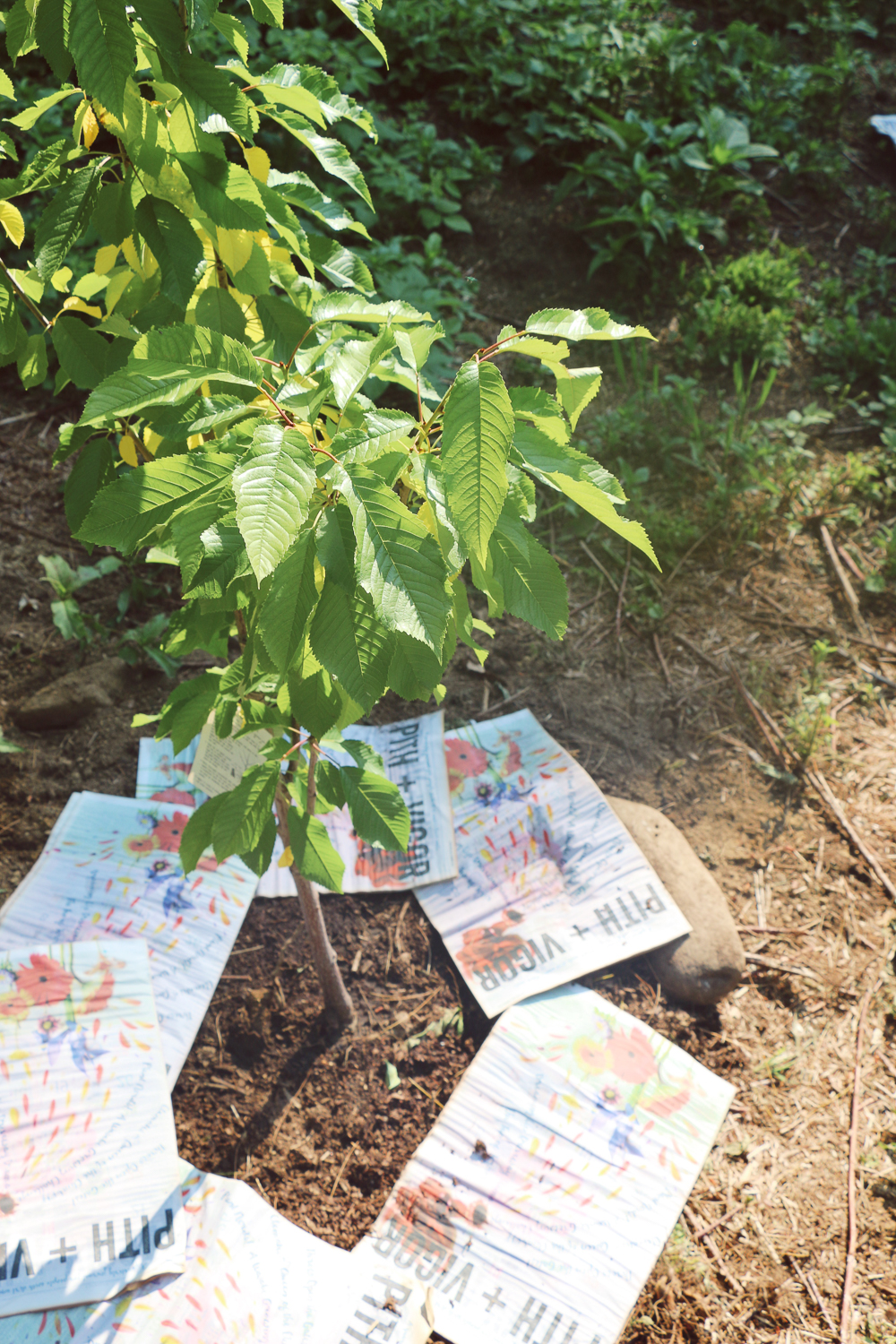
What you need to know about Grafted Fruit Trees
Many fruit trees are grafted, and if you are not careful, you may find that the root stalk takes over. (This has happened with one of my apples, and you can clearly see that the stem that bolted from the rootstock does not fruit, and it needs to be pruned out).
I also suspect that this is the issue with the two cherry trees. They are very shrubby, and I think that they were sold as hardy varieties in my area (incorrectly) what has persisted is only the rootstock and not the actual grafted fruiting part of the tree. Knowing a bit about grafting is helpful in understanding orchard trees.
The reason that trees are grafted is because they will typically perform better. Orchardists and breeders graft the top of one tree to the rootstock of another. Each is chosen for its most desirable qualities and then put together. The rootstock is generally chosen for hardiness and disease and pest resistance, whereas the top can be chosen for all sorts of exciting fruits or other qualities. The practice of creating these Frankenstein trees helps to have the healthiest orchards with the most variety.
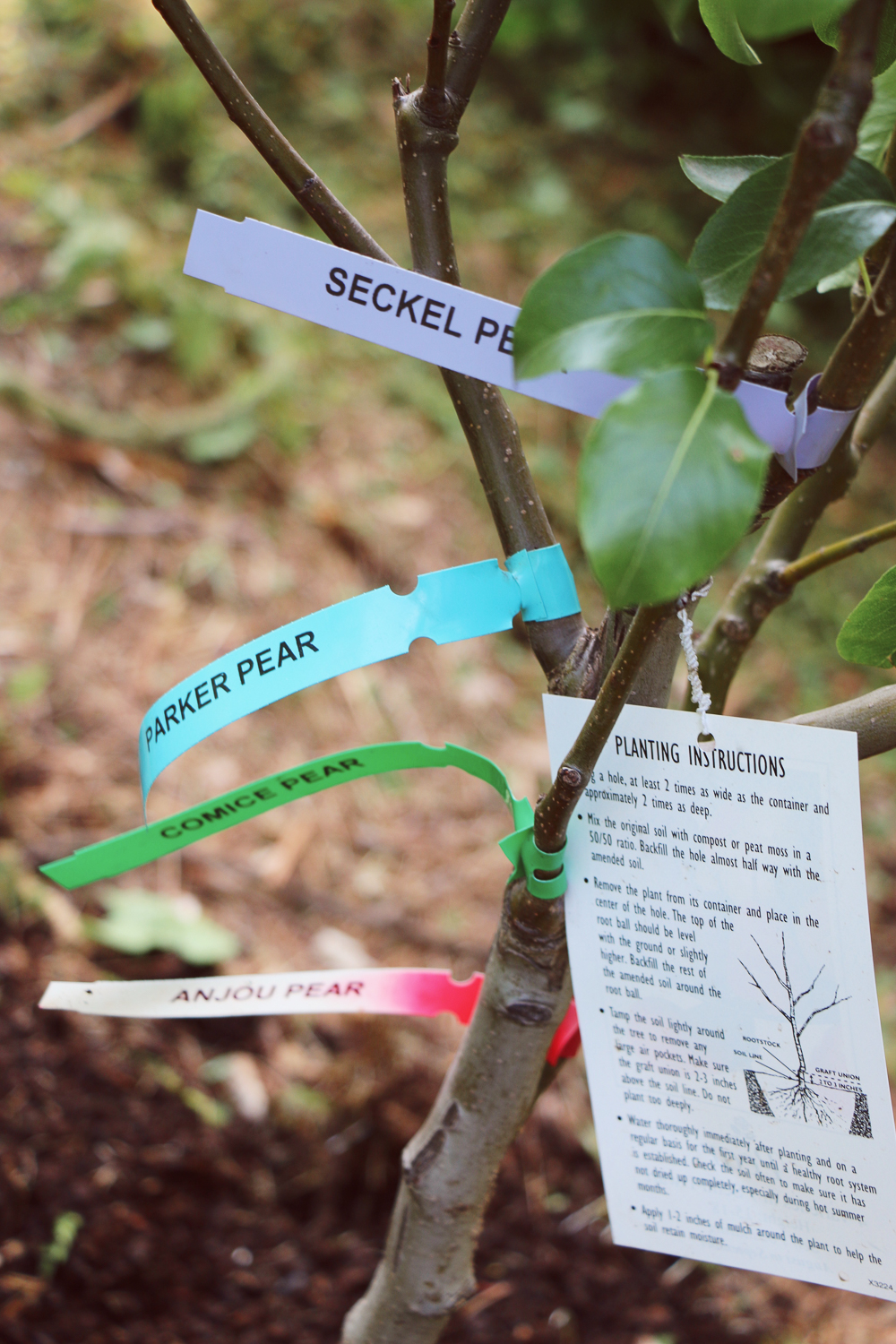
Pruning Fruit trees
Pruning is a skill I am still developing – particularly when it comes to fruit trees. There is much to know and some real technique involved in making good cuts.
Fruit trees are not so different than other trees, and generally, you want to prune for shape and size and to remove overlapping branches.
Tipping Cuts
But I didn’t, until recently, know about tipping cuts. These are cuts you make in the winter and they also encourage new growth (and fruit). Tipping cuts are made on new small branches. They are angled cuts made about ¼” above a bud – basically pruning away the tips of branches. I have seen how pruning can dramatically improve the quantity of fruit produced, and now that I have established a couple of trees, I am eager to try this technique as well.
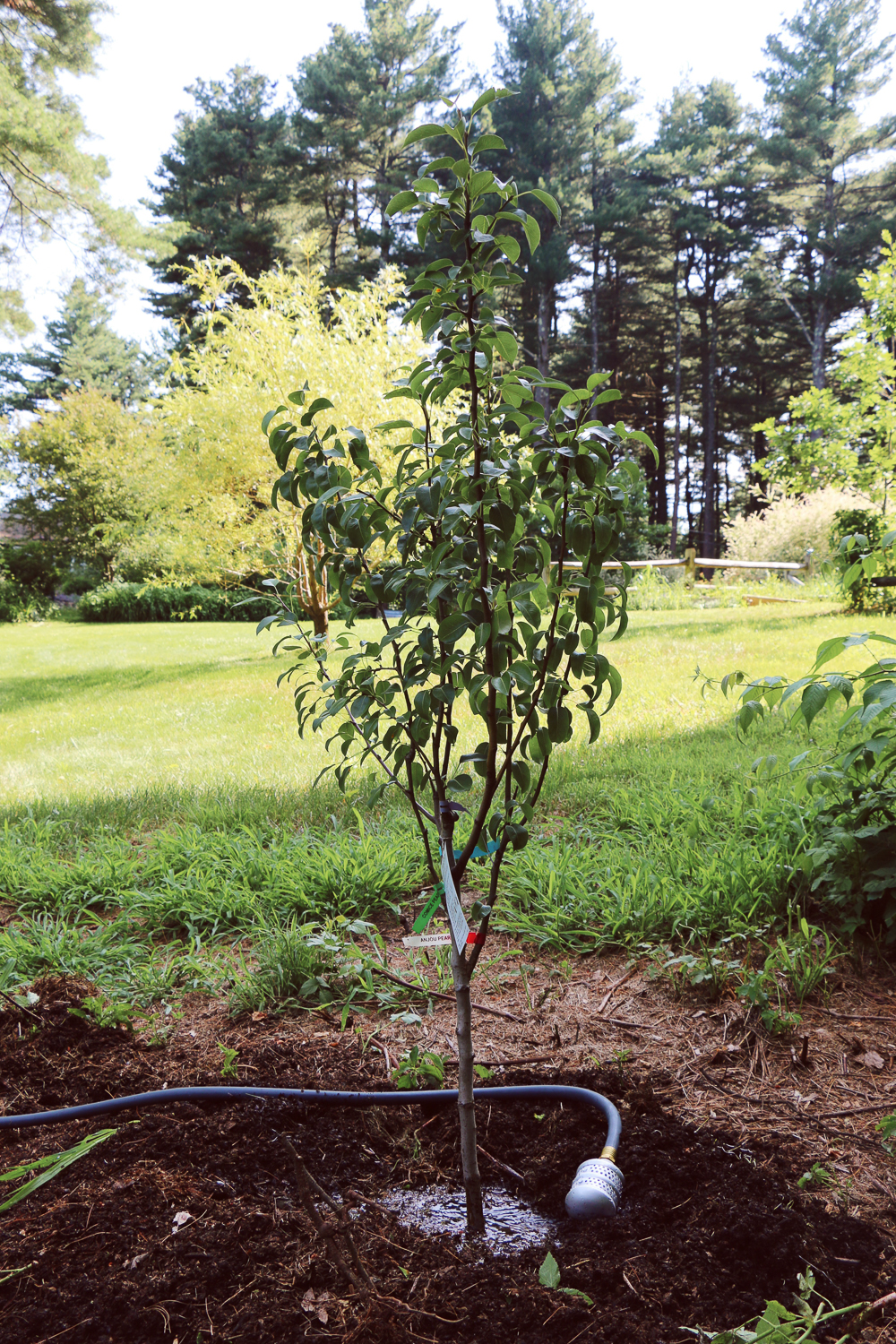
Have you planted fruit trees or a backyard orchard? As a novice orchardist, I’d love to hear some of you best tips for growing fruit trees.
I’ll update this post as our orchard and skills grow. But until then, feel free to ask questions.
Love the bubbler thingy. I’ve never used one before. Looks so cool and retro. Can you talk more about tipping cuts? Do the buds below the cut grow into two new branches? Do you plan the cut according to which direction the bud will shoot out a branch (if the buds are alternating)?